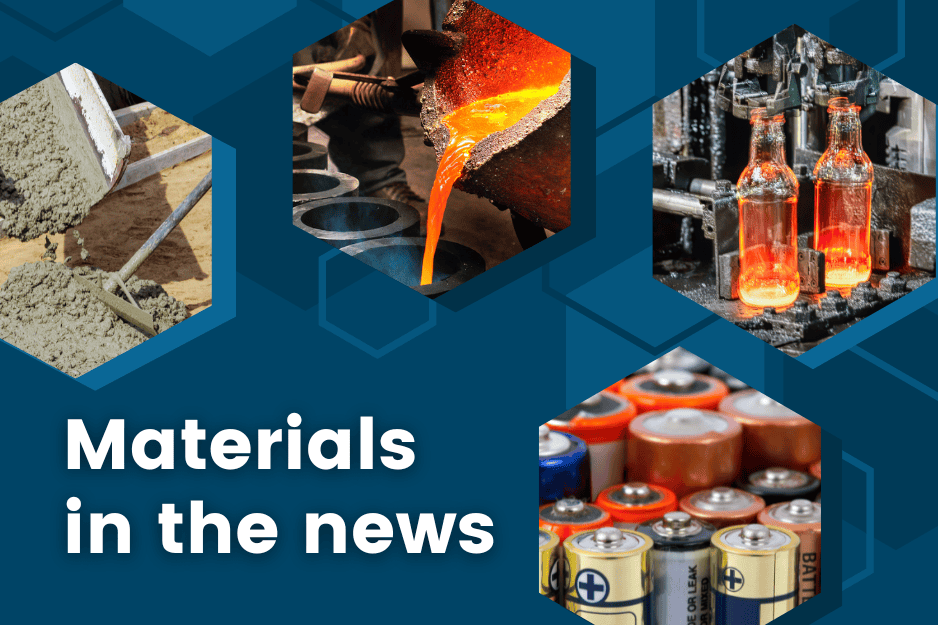
[Image above] Credit: ACerS
NANOMATERIALS
Metamaterial emits infrared light better than it absorbs it
Researchers created a metamaterial made of five, 440-nm-thick layers of electron-doped indium gallium arsenide. The metamaterial exhibited strong nonreciprocal emission, meaning it can emit infrared light better than it can absorb it.
DNA-sized crystals in cosmic ice has major implications for astrophysics
Researchers from University College London and the University of Cambridge have revealed that “space ice,” long thought to be completely disordered, is actually sprinkled with tiny crystals. The discovery that even the most common ice in space retains a surprising structure has major implications for astrophysics.
ENVIRONMENT
Antarctic research focuses on accumulations of rare earth elements
Montana State University geologists described the movement and accumulation of rare earth elements in an arid, partially permafrost region of Antarctica. Though mineral extraction is prohibited on the Antarctic continent, knowledge of how the materials behave and accumulate in desert and cold regions could be useful elsewhere, such as Greenland and Ukraine.
This sun-powered sponge pulls drinking water straight from the ocean
Researchers created a solar-powered, sponge-like aerogel containing carbon nanotubes and cellulose nanofibers that turns seawater into drinkable water using just sunlight and a plastic cover. Unlike previous materials, this new 3D-printed aerogel maintains its efficiency at larger sizes.
MANUFACTURING
Robotic probe quickly measures key properties of new materials
Massachusetts Institute of Technology researchers developed an artificial intelligence-based system that uses a robotic probe to measure photoconductance. During a 24-hour test, the fully autonomous robotic probe took more than 125 unique measurements per hour, with more precision and reliability than other artificial intelligence-based methods.
‘Marshmallow’ concrete gently stops aircraft during emergency landings
Researchers led by China Building Materials Academy Co., Ltd. developed a type of concrete featuring more than 80% porosity and weighing just 200 kg per cubic meter—a tenth of the weight of standard concrete. This material creates a “soft” barrier that absorbs kinetic energy through controlled crushing.
OTHER STORIES
Upcoming ACerS–Wiley webinar: Bioceramics, Biomaterials, and Additive Manufacturing
An upcoming free live webinar hosted by Wiley and The American Ceramic Society will welcome four distinguished ceramics researchers—Francesco Baino, Aldo Roberto Boccaccini, Bose Susmita, and Julian Jones—to present on how advanced ceramic materials are shaping the future of healthcare. The webinar takes place Thursday, July 17 at 10 a.m. Eastern.
New international journal focused on solidification science and technology
Materials and Solidification is a new international journal dedicated to advancing research in solidification theory, materials design, and processing technology. It is published by Tsinghua University Press and supported by the State Key Laboratory of Solidification Processing at Northwestern Polytechnical University.
Massive study detects AI fingerprints in millions of scientific papers
A team of U.S. and German researchers analyzed more than 15 million biomedical abstracts on PubMed and found that at least 13.5% of the papers published in 2024 were written with some amount of large language model processing.
German startup shares update on laser-engraved ceramic storage device
German startup Cerabyte presented an ambitious roadmap at the A3 Tech Live conference for its laser-engraved ceramic storage device. Highlights included the goal of realizing storage systems that offer 100 petabytes of storage per rack, with transfer rates of 2 GB/s, by 2030. The pilot system has 1 petabyte storage per rack and only 100 MB/s data transfers.
Author
Lisa McDonald
CTT Categories
- Weekly Column: “Other materials”
Related Posts
Other materials stories that may be of interest for November 12, 2025
November 12, 2025
Other materials stories that may be of interest for November 5, 2025
November 5, 2025
Other materials stories that may be of interest for October 29, 2025
October 29, 2025